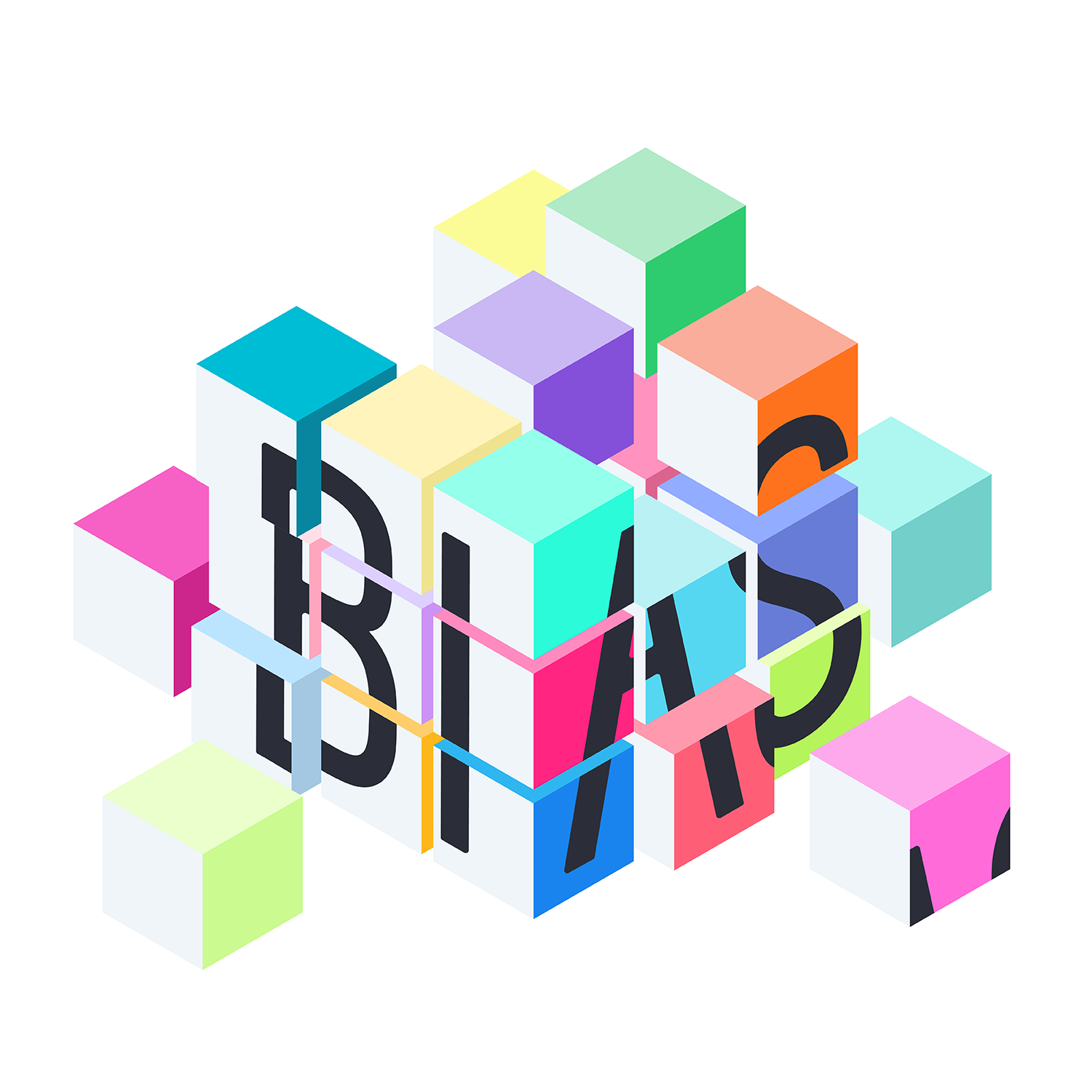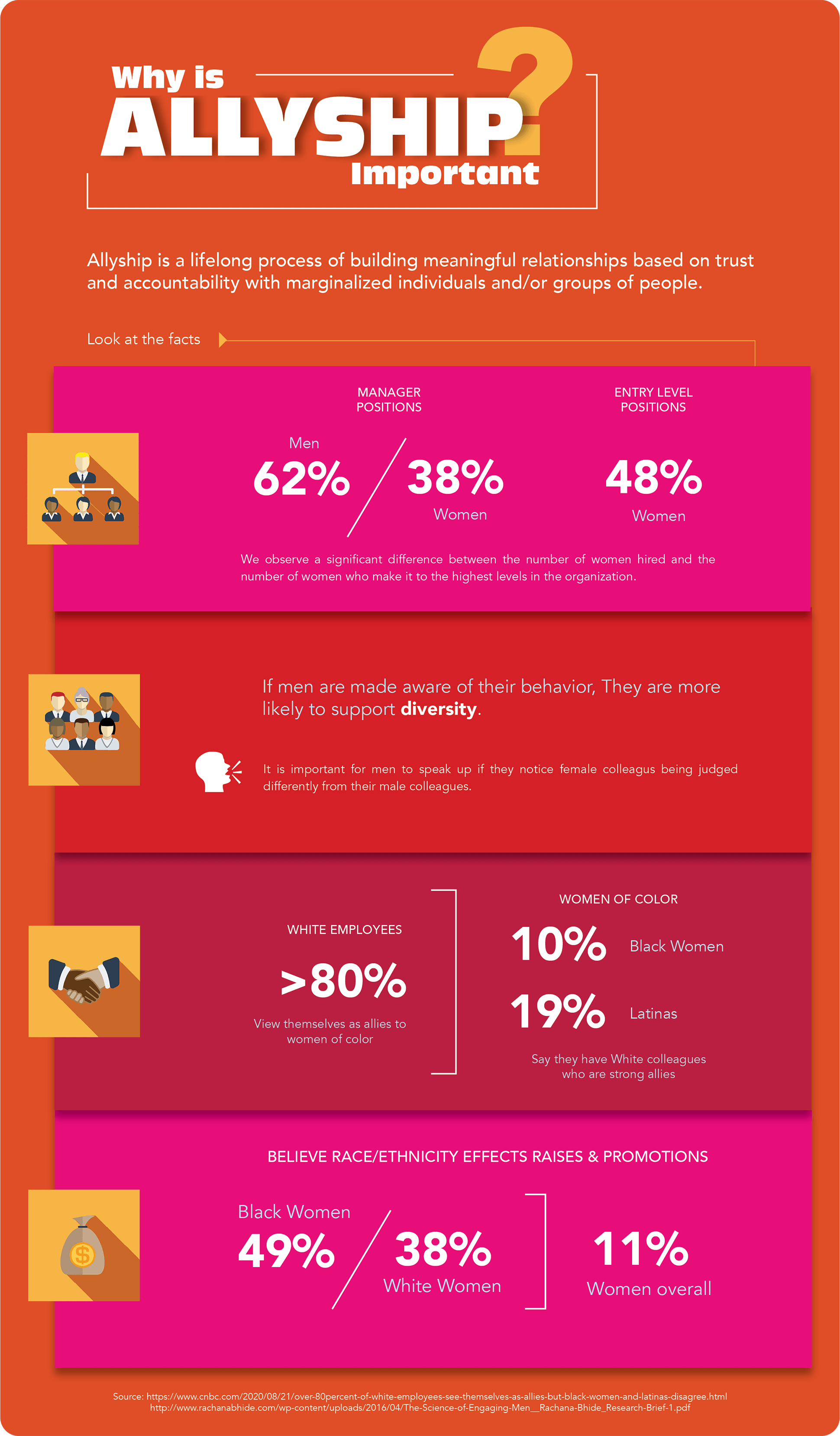Ally in the Merriam-Webster Dictionary can be defined as a noun or a verb. As a noun it is defined as “one that is associated with another as a helper: a person or group that provides assistance and support in an ongoing effort, activity, or struggle.” The definition of ally as a verb is “to unite or form a connection or relation between.”

Further, the NIH Chief Officer for Scientific Workforce Diversity (COSWD) site uses the lens of diversity, equity, inclusion, and accessibility (DEIA) to define an ally as, “A person of one social identity group who stands up in support of members of another group; typically, a member of a dominant group standing beside member(s) of a targeted group.” It can be a difficult, but worthwhile, endeavor to understand the intersection between the two forms of the word ally and how they both play a part when applied to DEIA efforts.
A key component to allyship is first exploring your own identity that is shaped by your life experiences. Then, to determine how your identify is affected by DEIA issues such as power and privilege. This foundation is important to the next step, which is to begin to recognize oppression broadly. The acknowledgment must be accompanied by education and awareness about the effects on a targeted group. Gaining this perspective is essential because often there is a misconception about what it means to be an ally.
The NIH Office of Equity, Diversity, and Inclusion (EDI) featured an infographic on its site within an article by Wells and White entitled “Why is Allyship Important?” It shows that while more than 80% of Caucasian employees view themselves as allies to women of color, only 10% of African American women and 15% of Latina women say they have Caucasian colleagues who are strong allies. This difference illustrates that it may be difficult to fully understand what it means to be an ally. People may view themselves as allies, but they may not be doing what is needed for the affected group to view them as allies.
Knowing what to do to ally yourself with a marginalized group can be overwhelming. It requires lifelong commitment and courage, but anyone can be an ally and leverage their privilege. All actions do not have to be on a grand scale but can begin with small deliberate steps that are done with DEIA goals in mind. A good start is to begin building relationships based on trust and accountability with individuals from marginalized groups or with people with a different identity.
The journey to becoming an ally is a unique process for each person. Allyship requires intentionally supporting others, holding yourself accountable and remaining flexible when your approach needs to change. Do not forget to be inclusive and mindful that not all groups or even individuals within the same group require the same things to feel included. A quote by Gwenyth R. Wallen, Ph.D., Chief Nurse Officer and Senior Investigator in the NIH Clinical Center described an insightful way to think about allyship in the NIH EDI article “ What is Allyship?” by Samantha-Rae Dickenson. She said, “ It is not about ‘paving the way’ for new investigators with common goals but rather to walk the walk with them.”
As you begin your own allyship journey, consider the tips referenced below from Bali White, Principal Strategist, Portfolio for Sexual and Gender Minorities, in the NIH EDI Office on how to get started. Also, noted below are the best practices for allyship recommended by Ashley Wells, Principal Strategist, Portfolio for Native Americans, in an article entitled “A Conversation on Allyship.” Allyship is a worthwhile lifelong practice and is a good first step in determining your role in DEIA efforts.
Tips from Bali:
- Explore your own prejudices
- Promote leadership opportunities to groups who don't typically occupy those positions
- Encourage others to be allies
- Build alliances among different groups
- Help increase visibility for underrepresented communities to avoid isolation
- Educate yourself about different histories and cultures
- Be a voice for others when groups are targeted and treated unfairly
- Promote leadership among different groups
Best Practices from Wells:
- Listen to others
- Be aware of your implicit biases
- Research and understand groups before building an alliance
- Use your privilege to amplify suppressed voices in society
- Accept criticism with grace
- Be dedicated every day to allyship
Infographic

Transcript
Why is Allyship Important?
Allyship is a lifelong process of building meaningful relationships based on trust and accountability with marginalized individuals and/or groups of people.
Look at the facts:
- We observe a significant difference between the number of women hired and the number of women who make it to the highest levels in the organization.
- If men are made aware of their behavior, they are more likely to support diversity.
- White employees:
- Women of color:
- 49% of Black women/38% of White women/11% of women overall believe race/ethnicity affects raises and promotions
Sources:
References/Resources/Additional Reading
Dickenson, Samantha-Rae. “What is Allyship?” NIH Office of Equity, Diversity, and Inclusion. January 28, 2021. https://www.edi.nih.gov/blog/communities/what-allyship.
Wells, Ashley and White, Bali. “Why is Allyship Important?” NIH Office of Equity, Diversity, and Inclusion. February 4, 2021. https://www.edi.nih.gov/blog/communities/why-allyship-important.
Gaffney, Carrie. (2016). “Anatomy of an Ally.” Learning for Justice , 53. https://www.learningforjustice.org/magazine/summer-2016/anatomy-of-an-ally.
Dickenson, Samantha-Rae. “Fostering Allyship Across Marginalized Groups.” NIH Office of Equity, Diversity, and Inclusion. February 12, 2021. https://www.edi.nih.gov/blog/communities/fostering-allyship-across-marginalized-groups.
Atcheson, Sheree. “Allyship – The Key to Unlocking the Power of Diversity.” Forbes . November 30, 2018. https://www.forbes.com/sites/shereeatcheson/2018/11/30/allyship-the-key-to-unlocking-the-power-of-diversity.
Ramsey, Franchesca. “5 Tips of Being an Ally” YouTube Video. 3:31. November 22, 2014. https://www.youtube.com/watch?v=_dg86g-QlM0.
